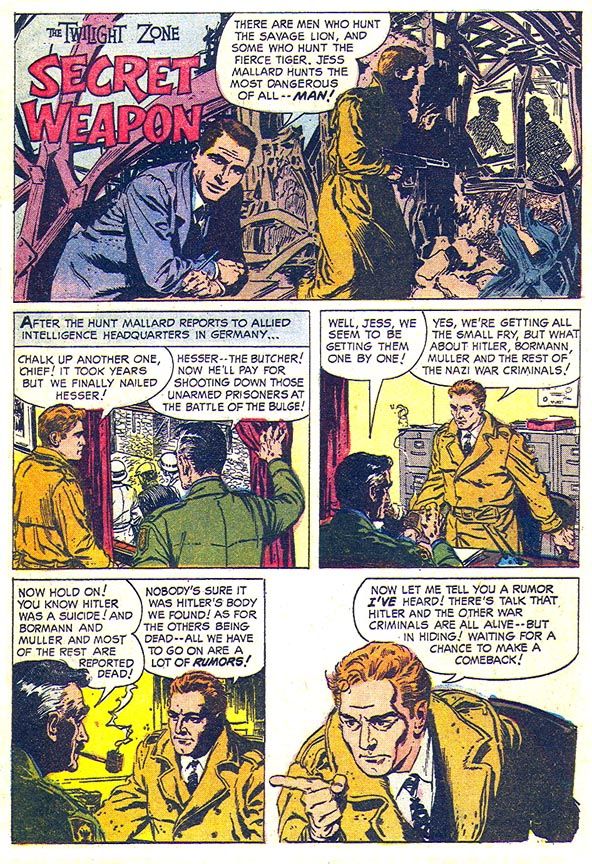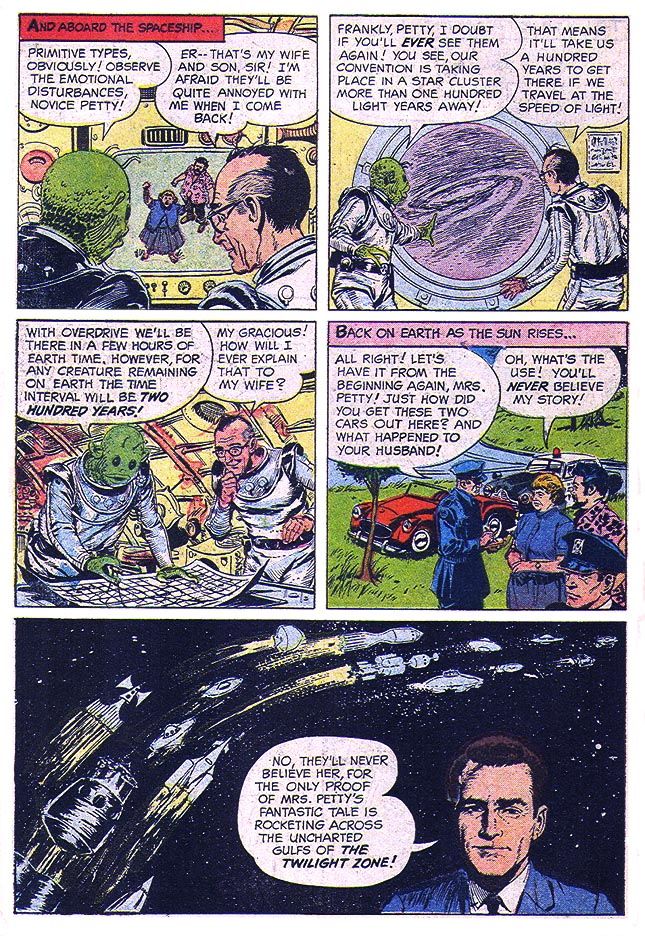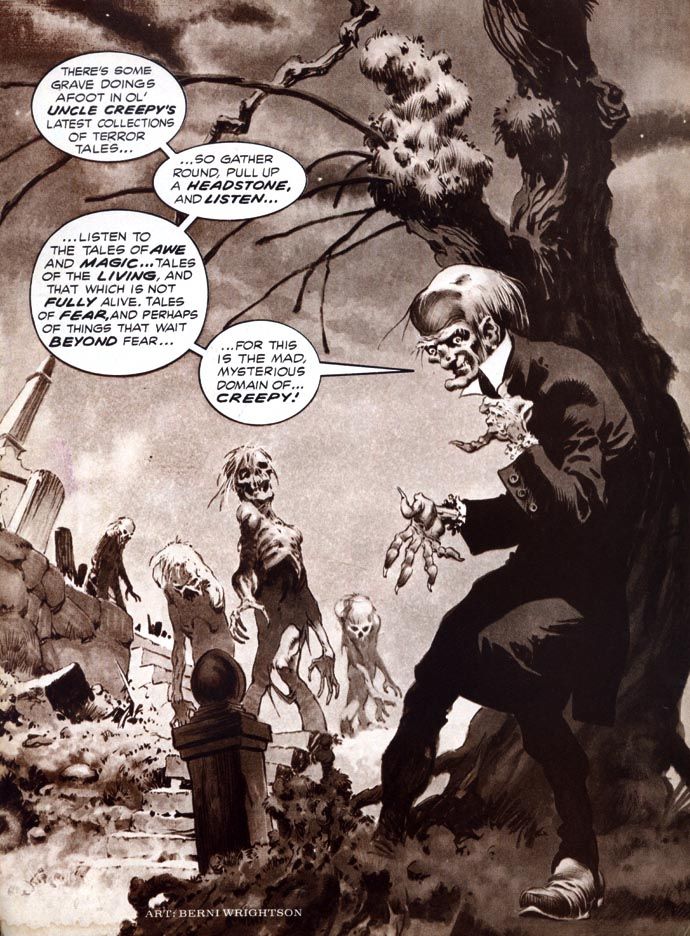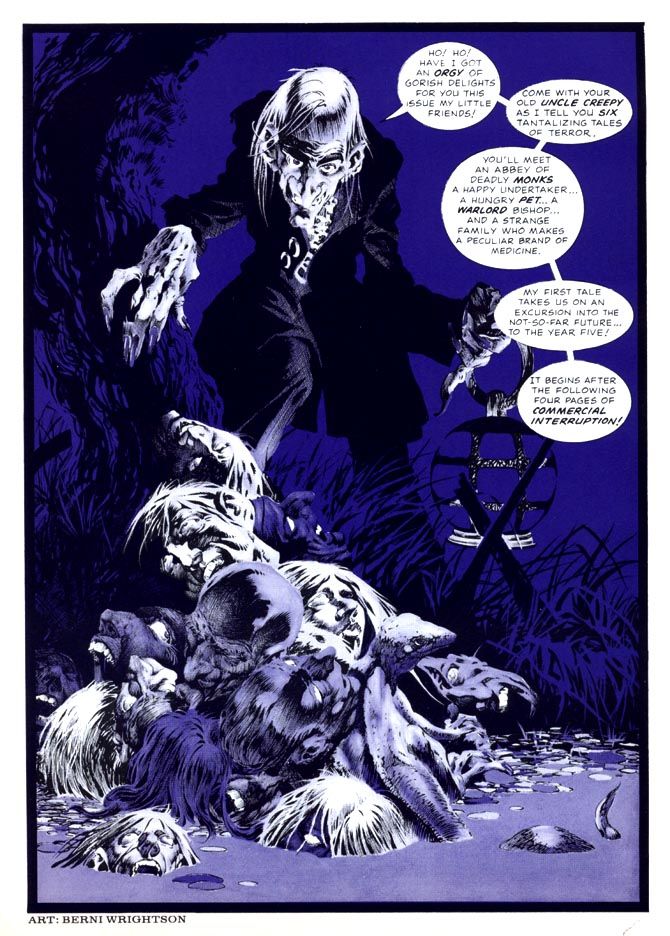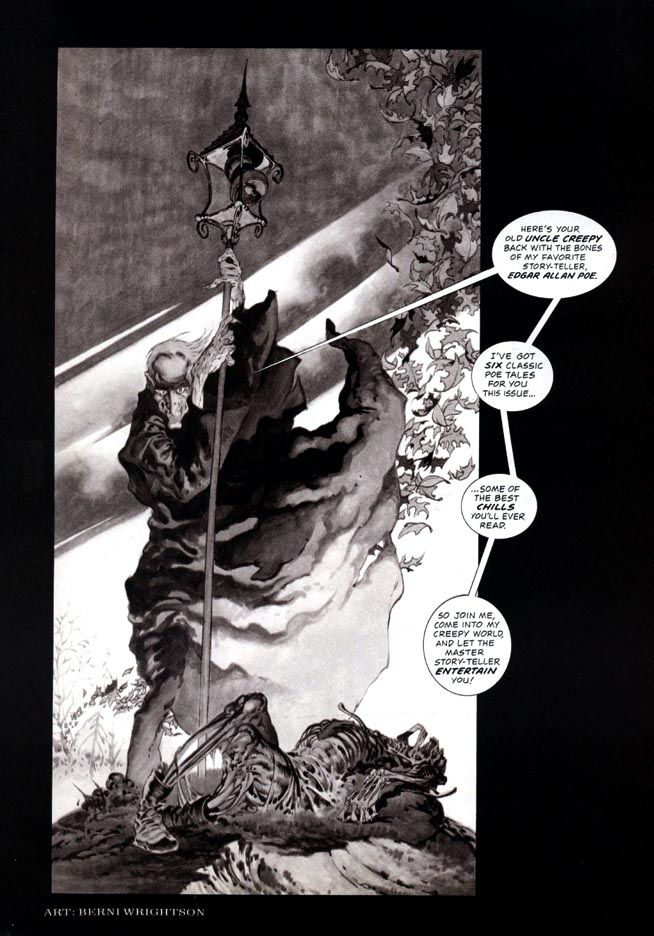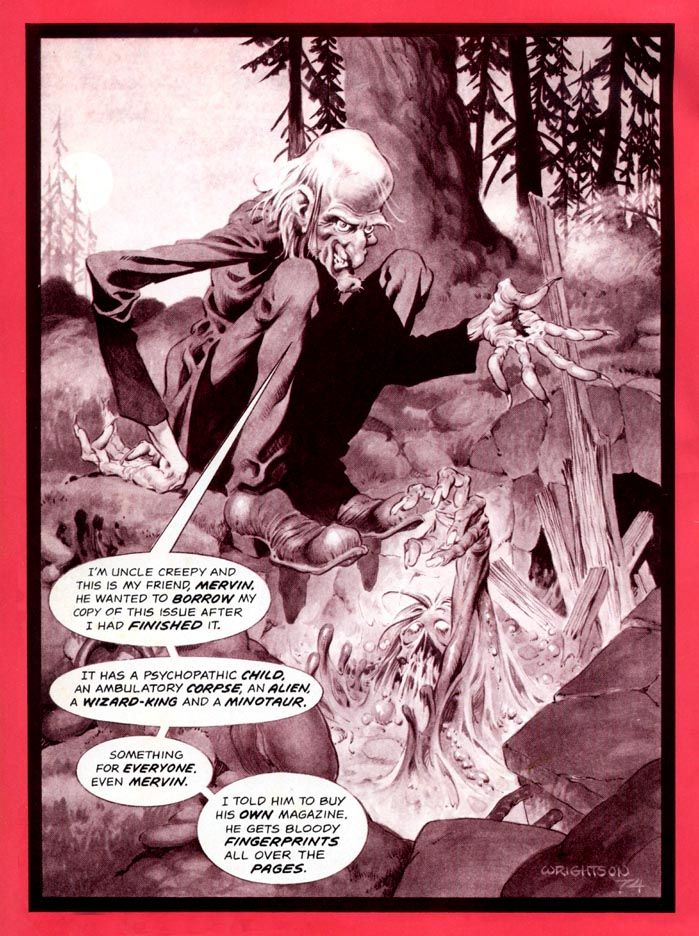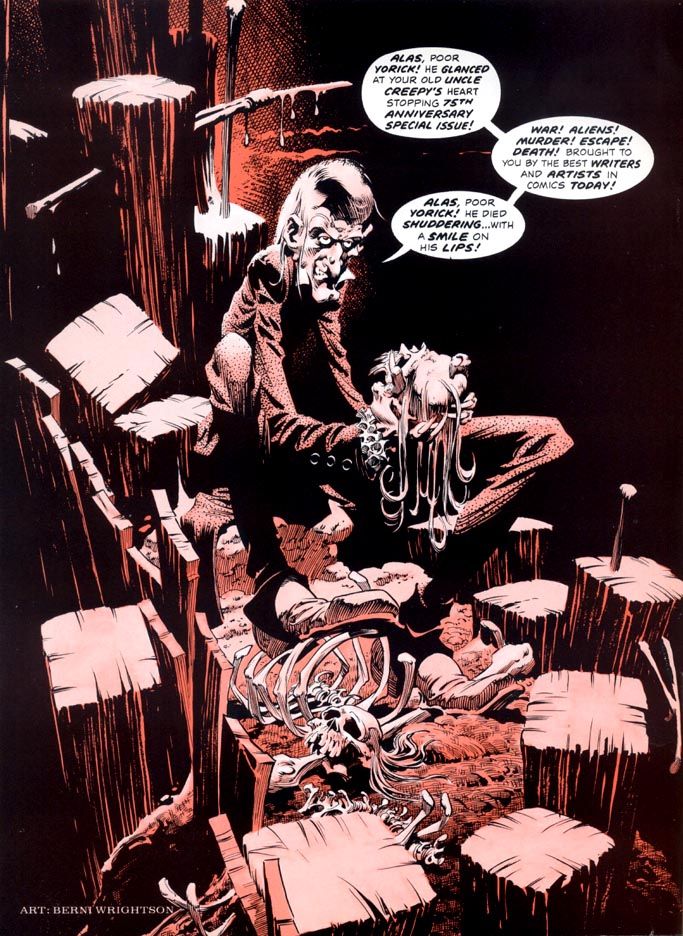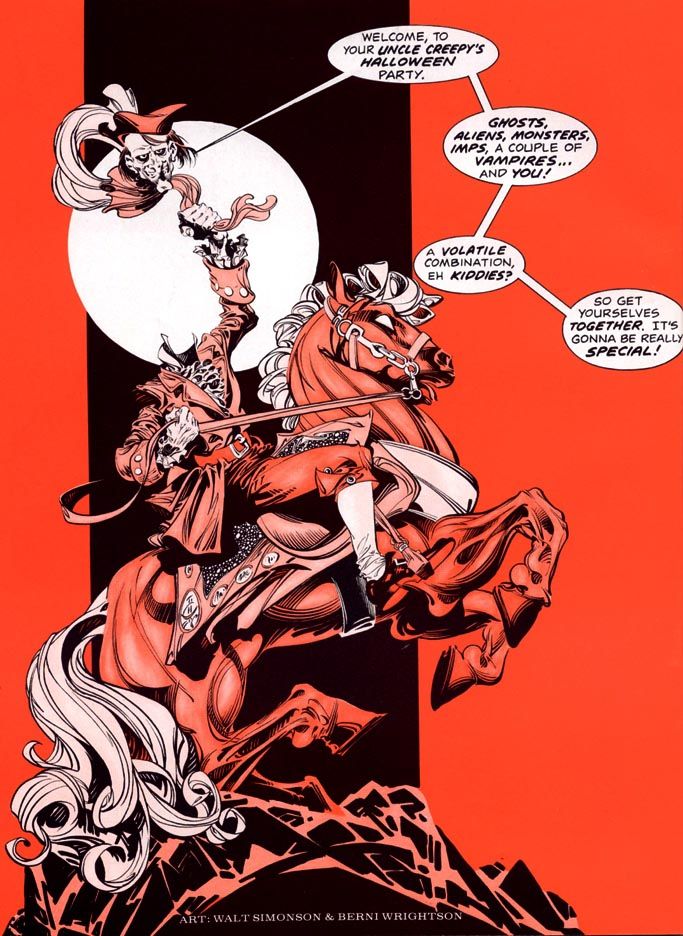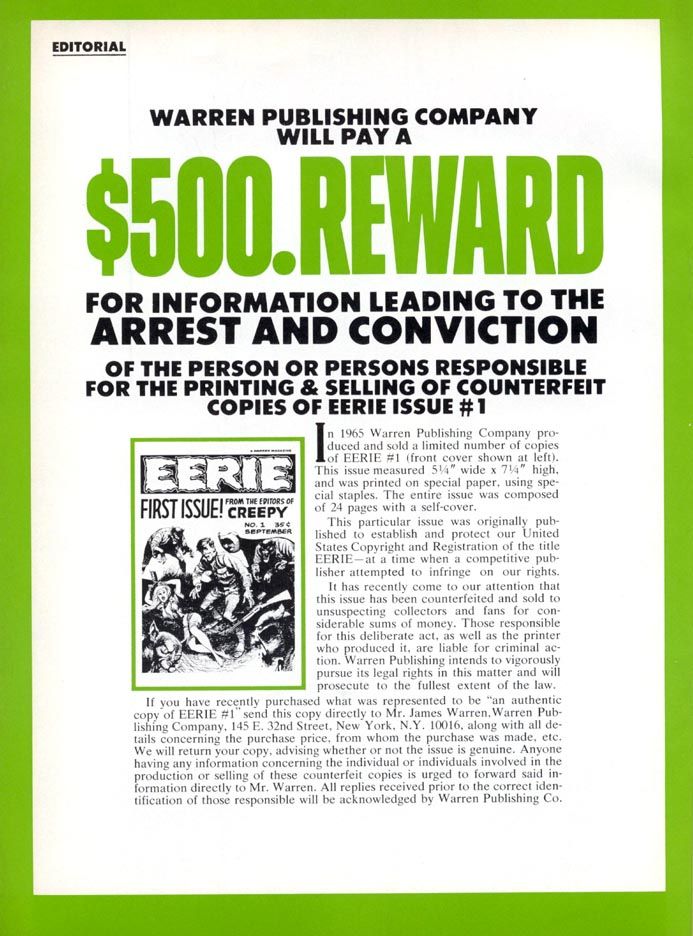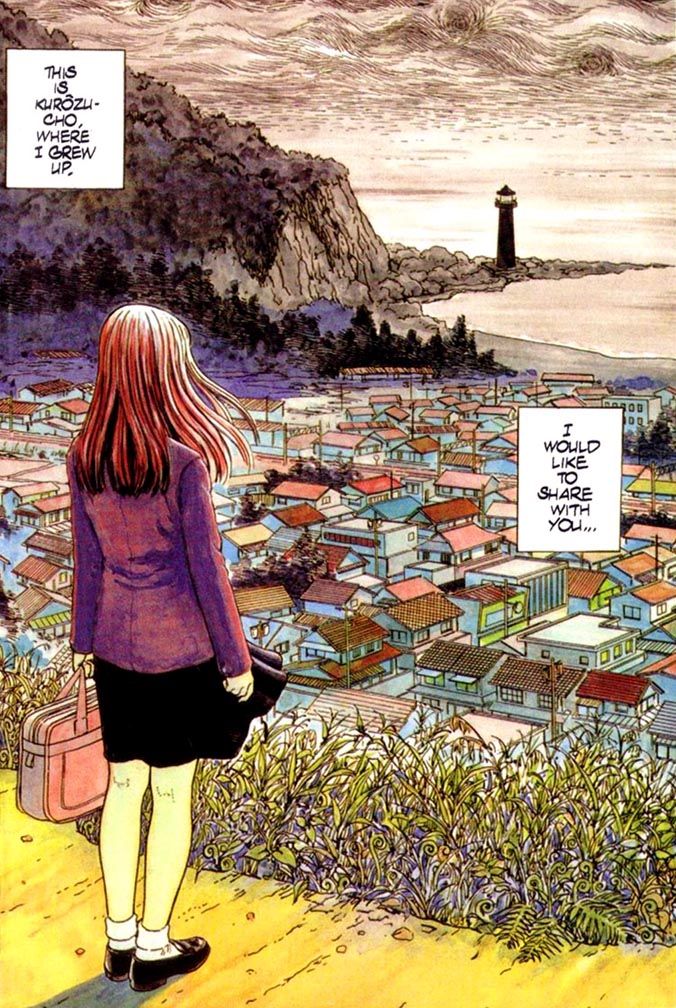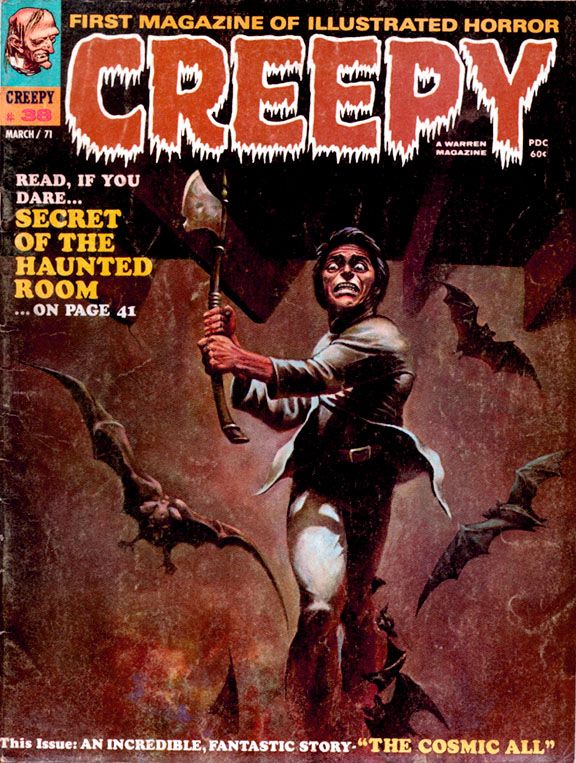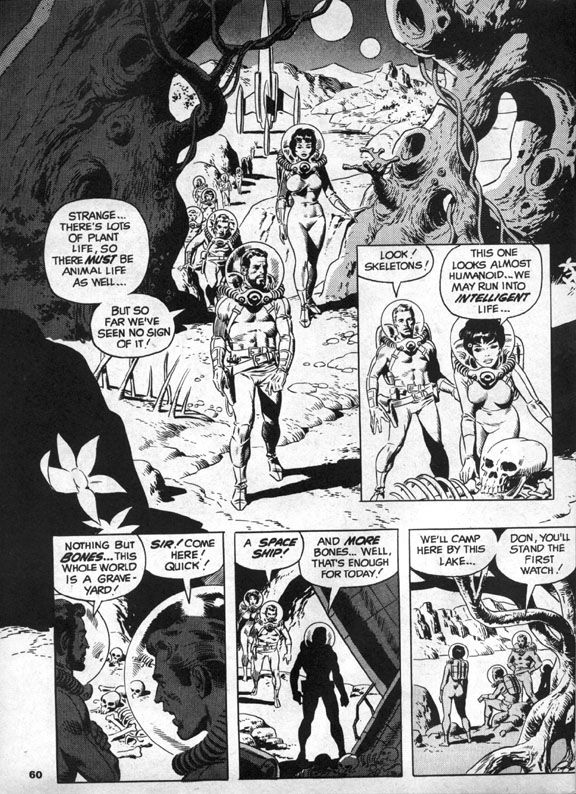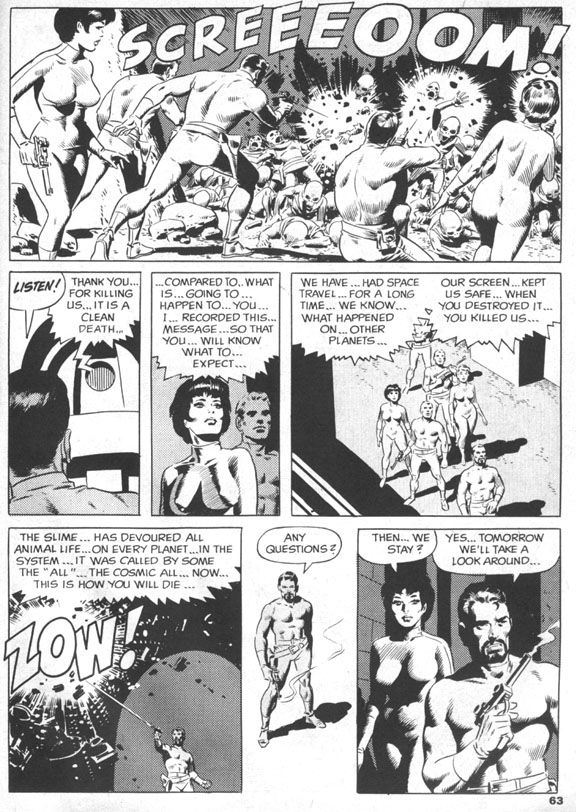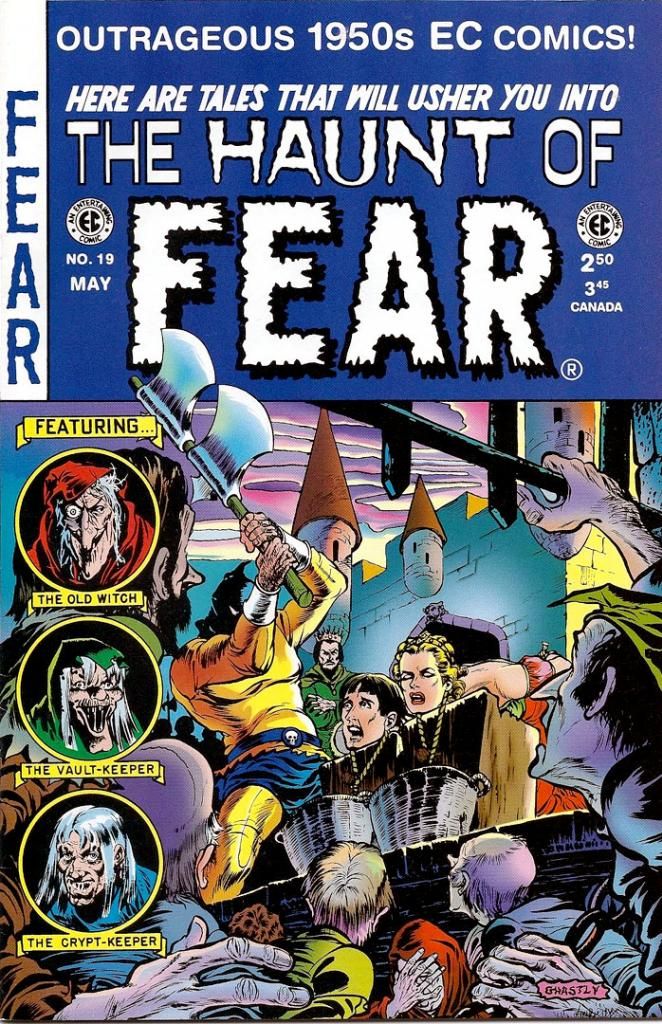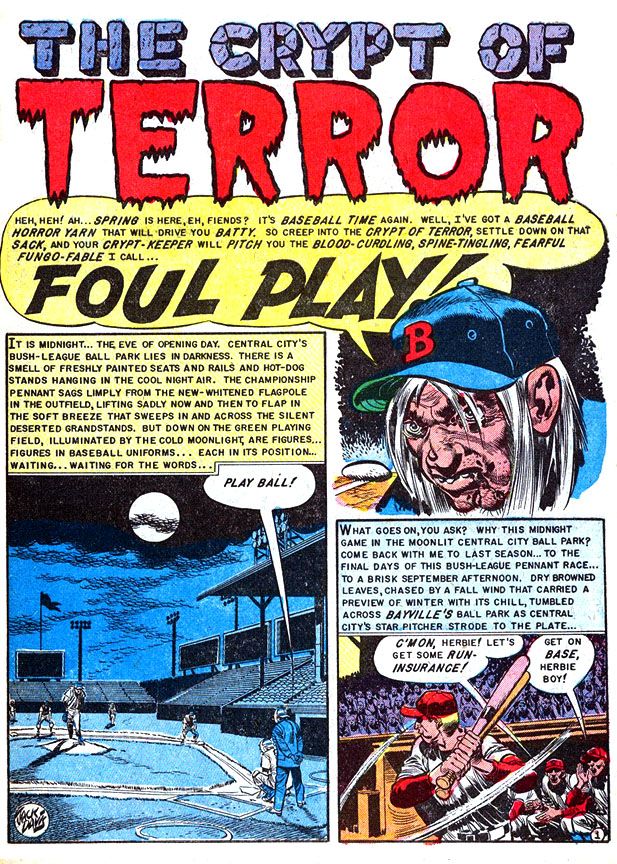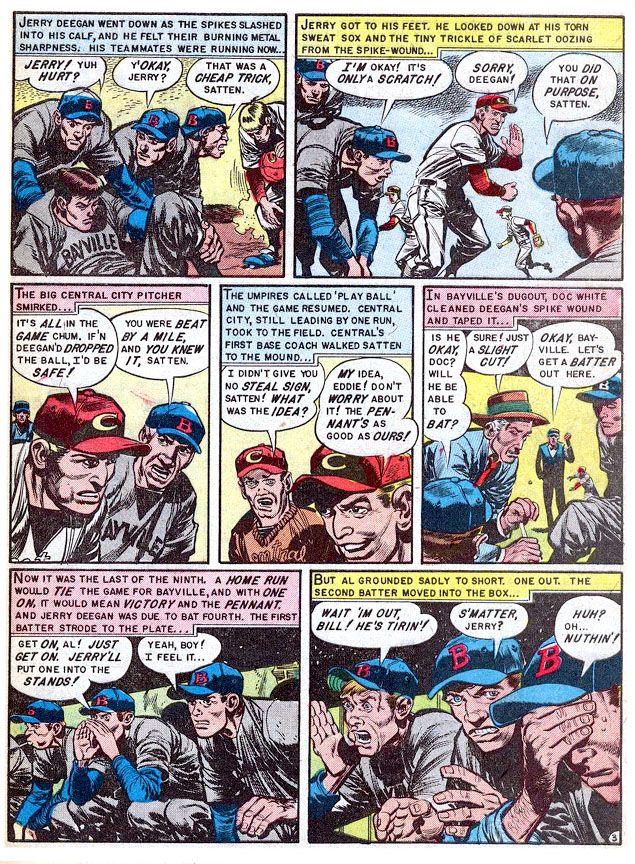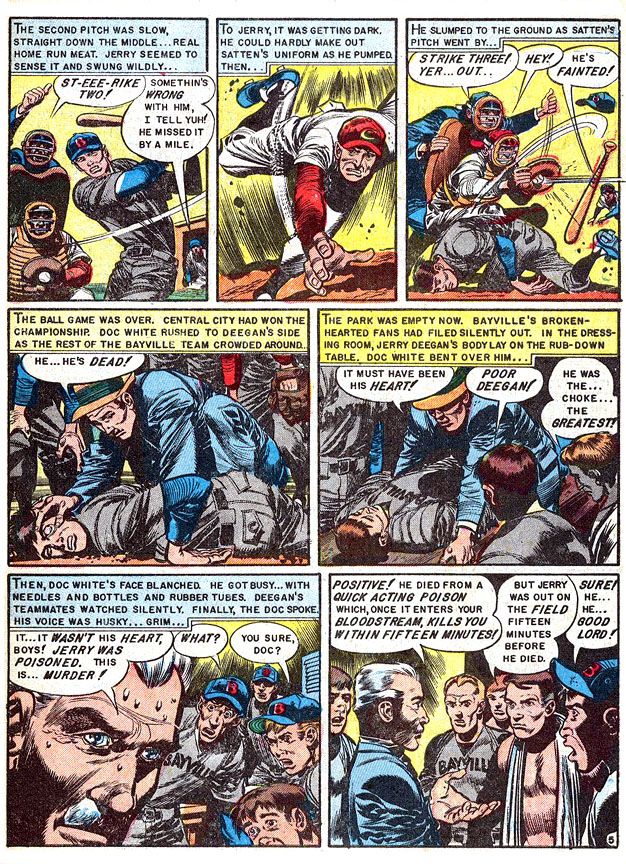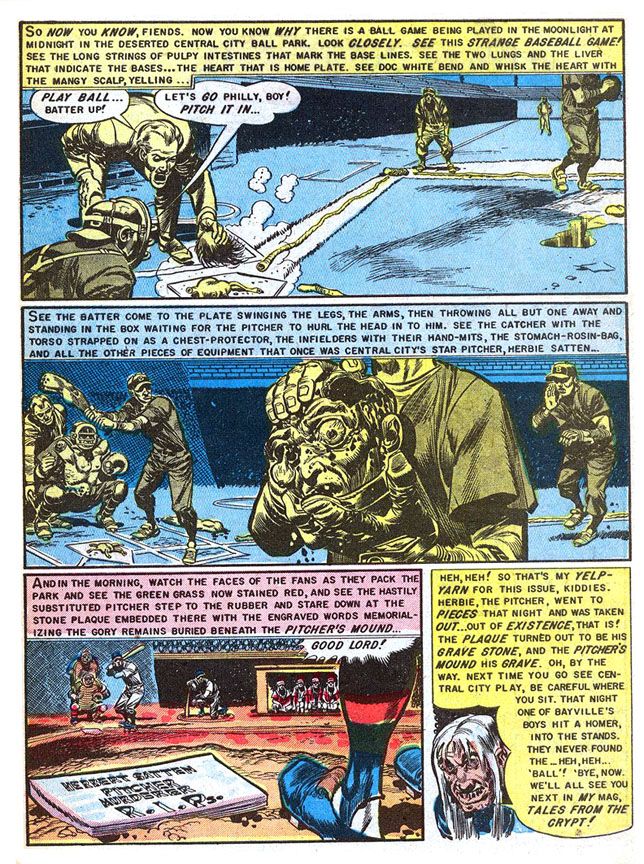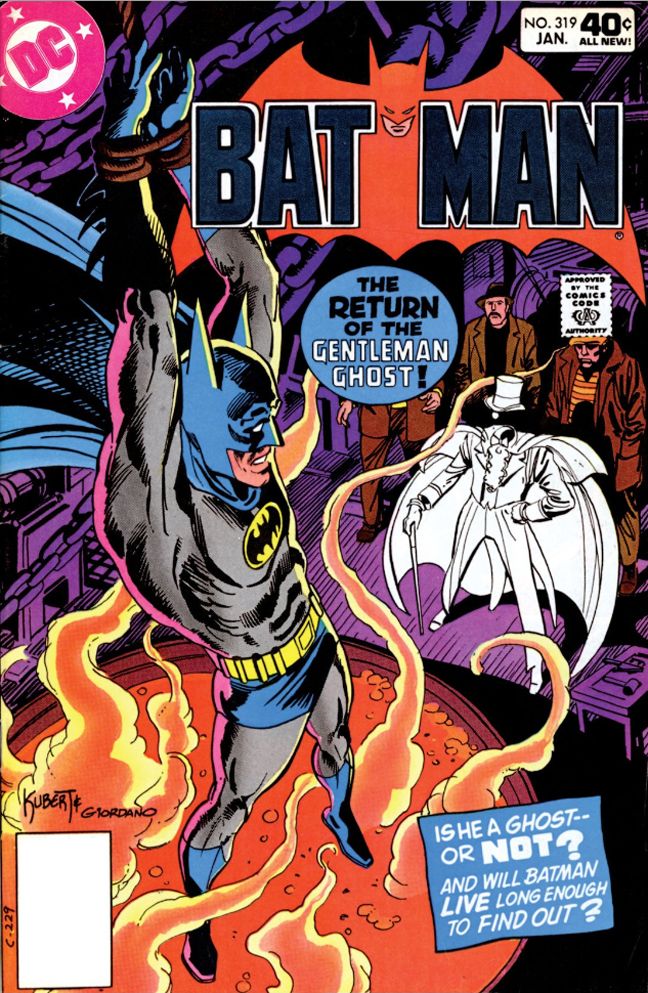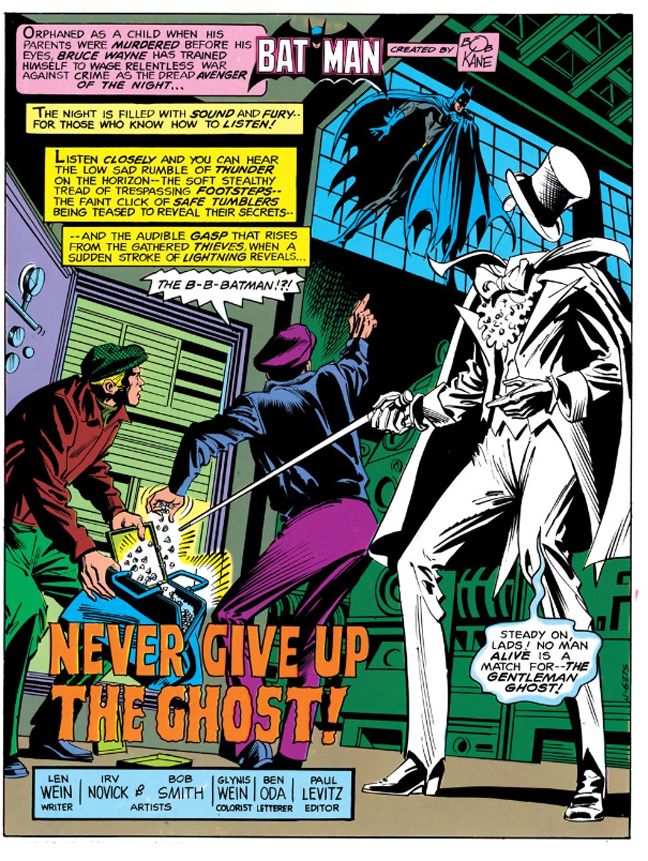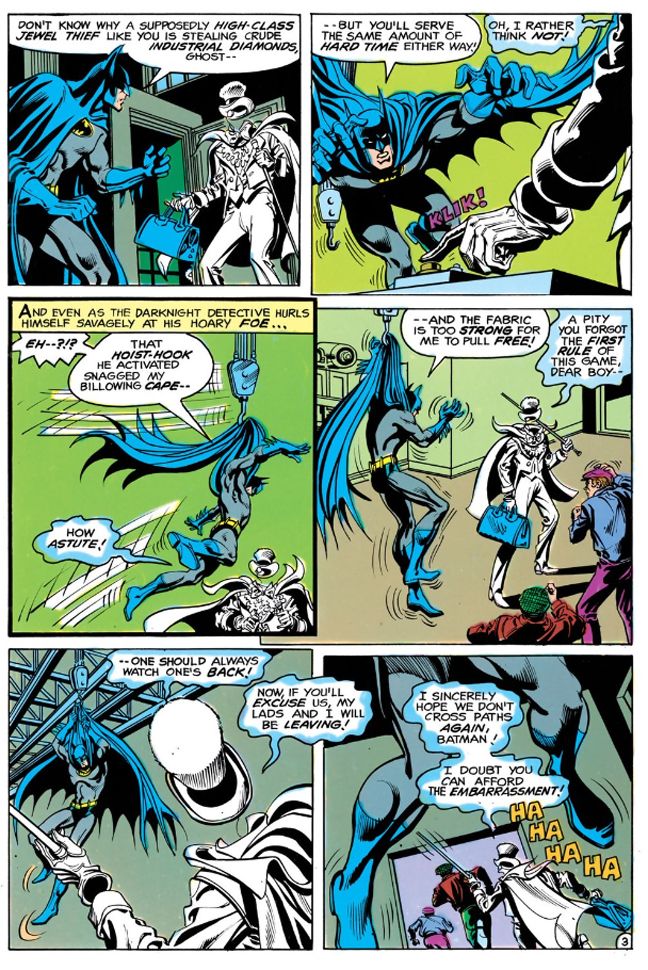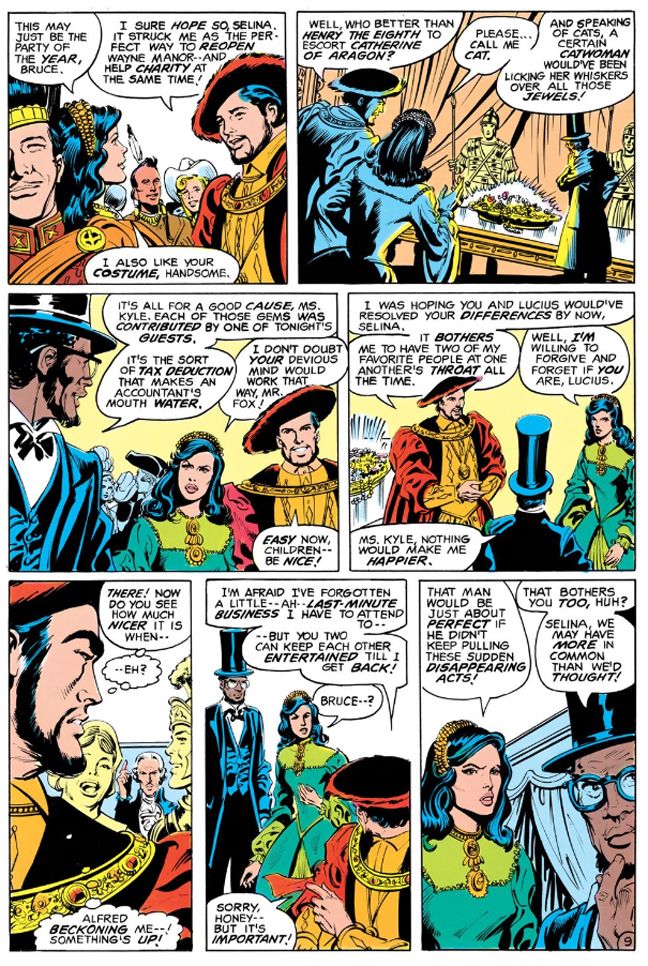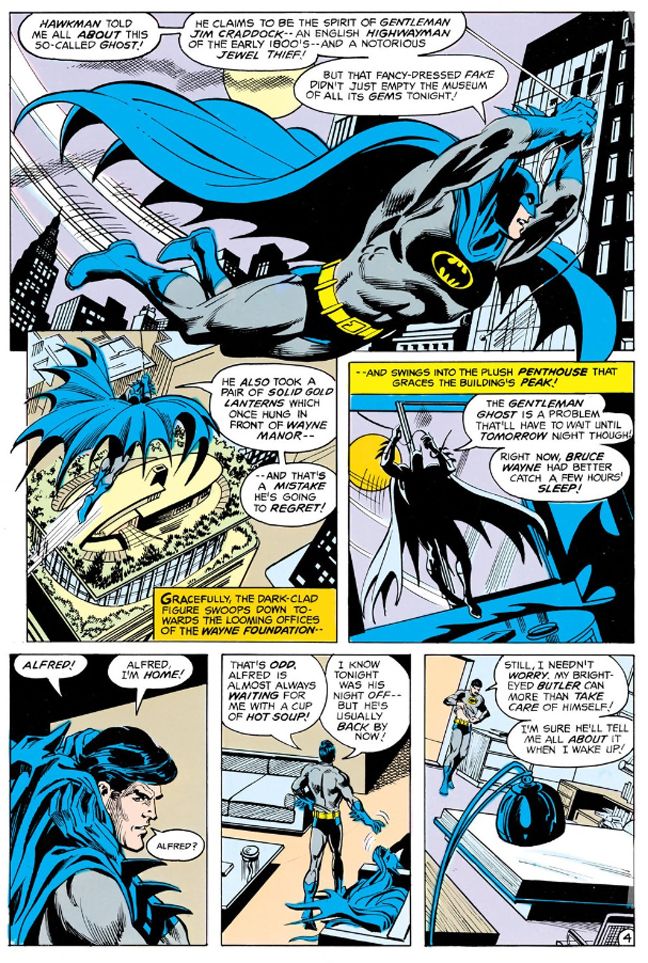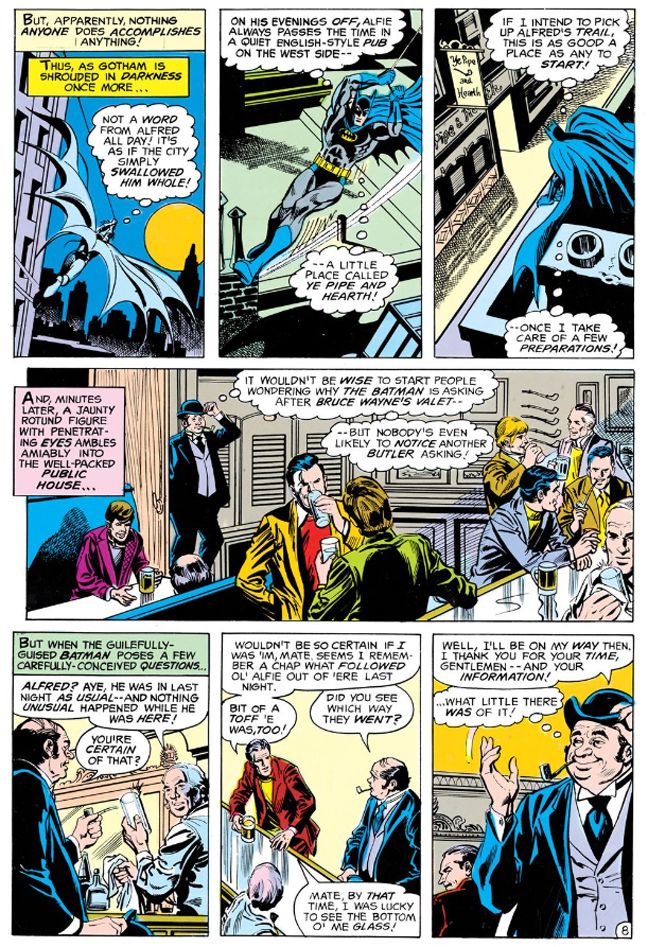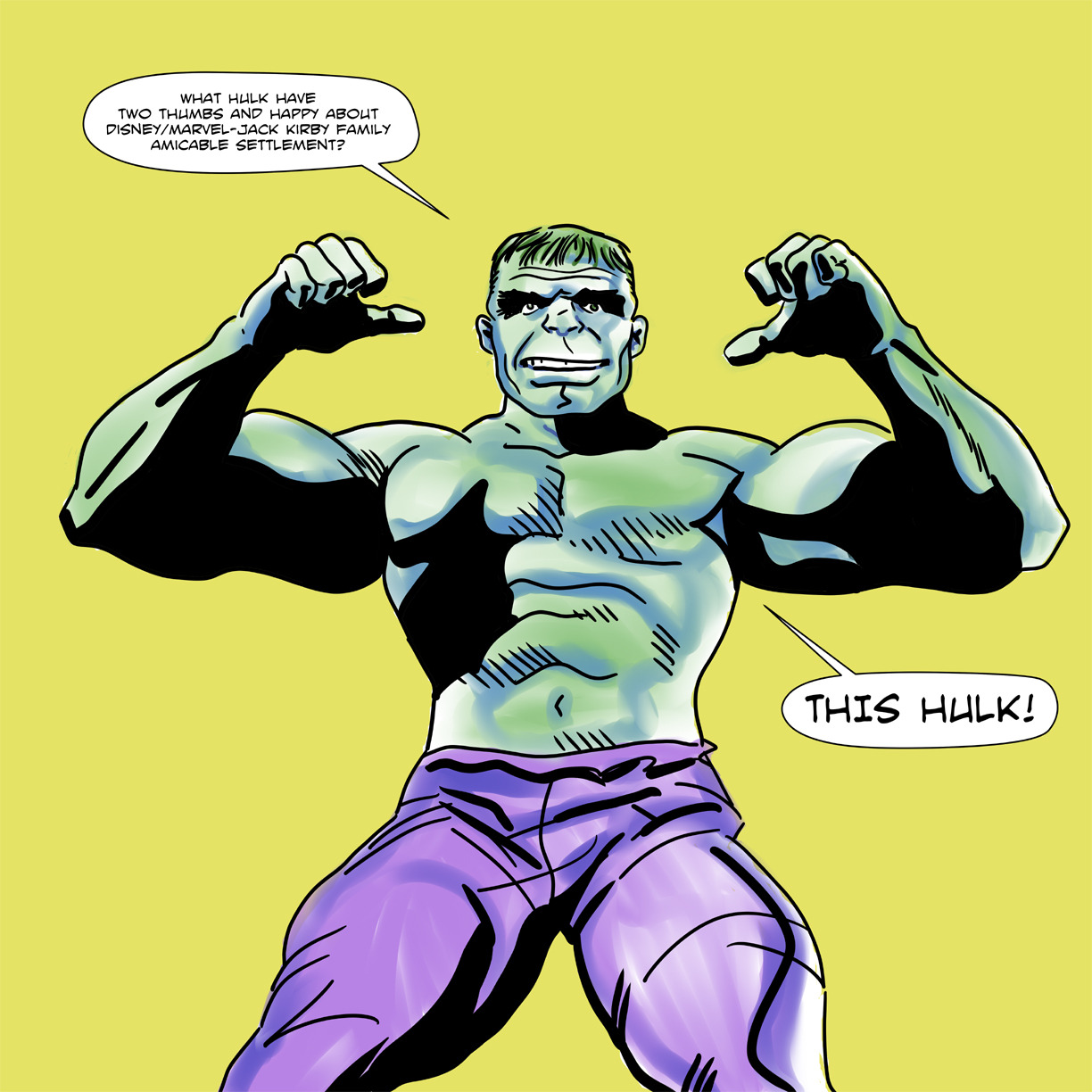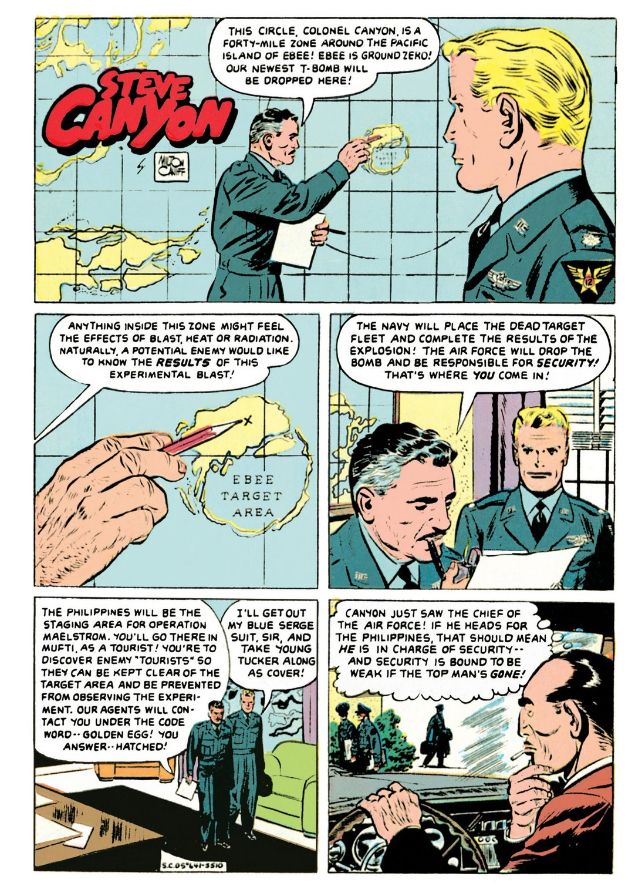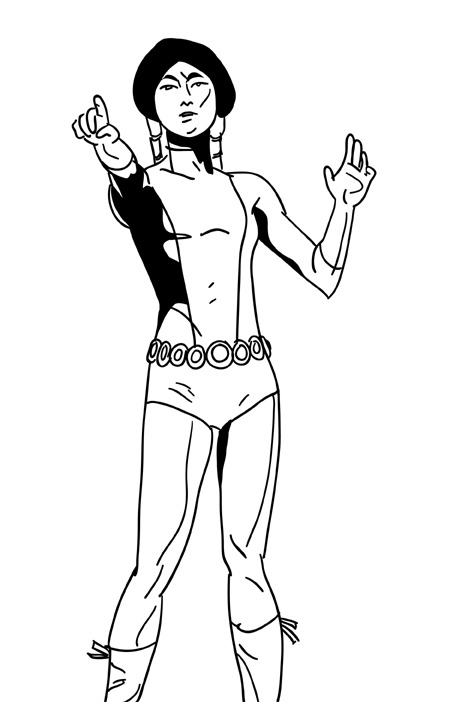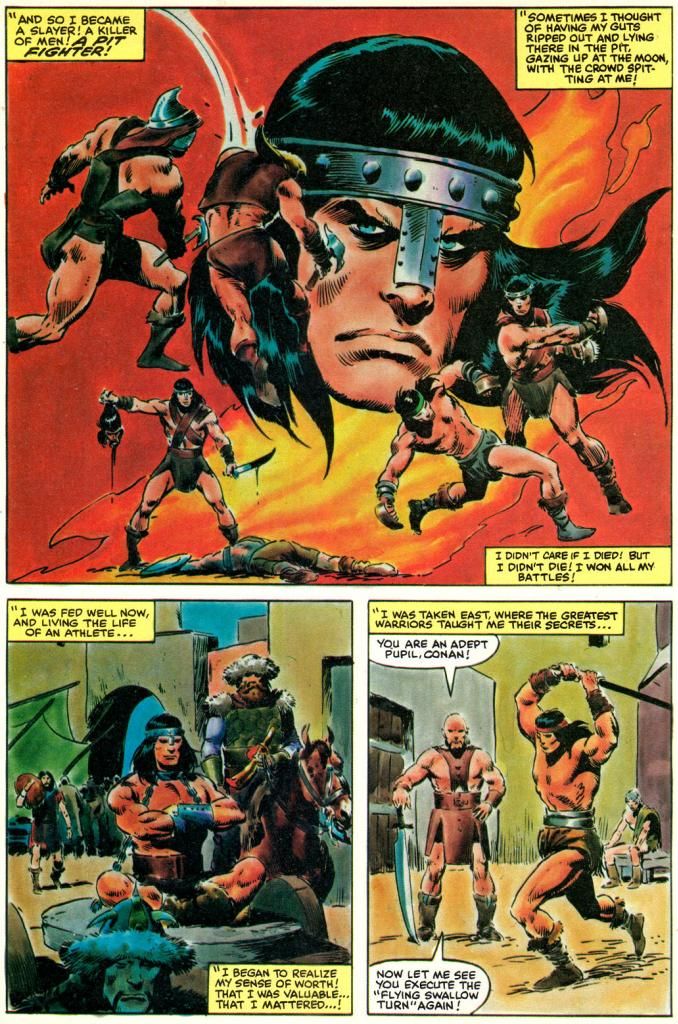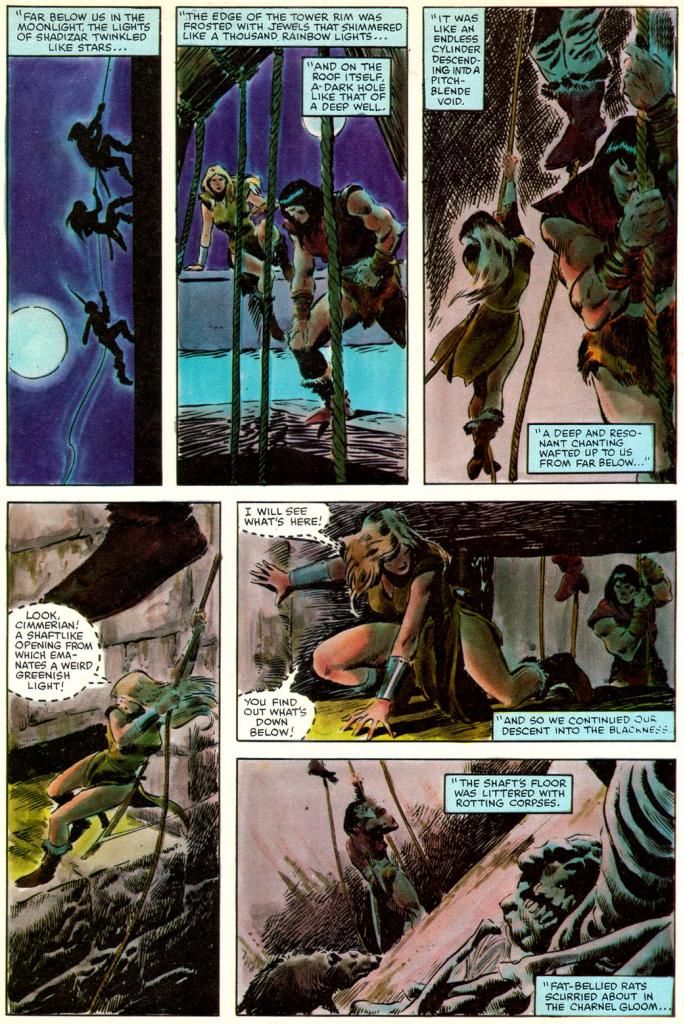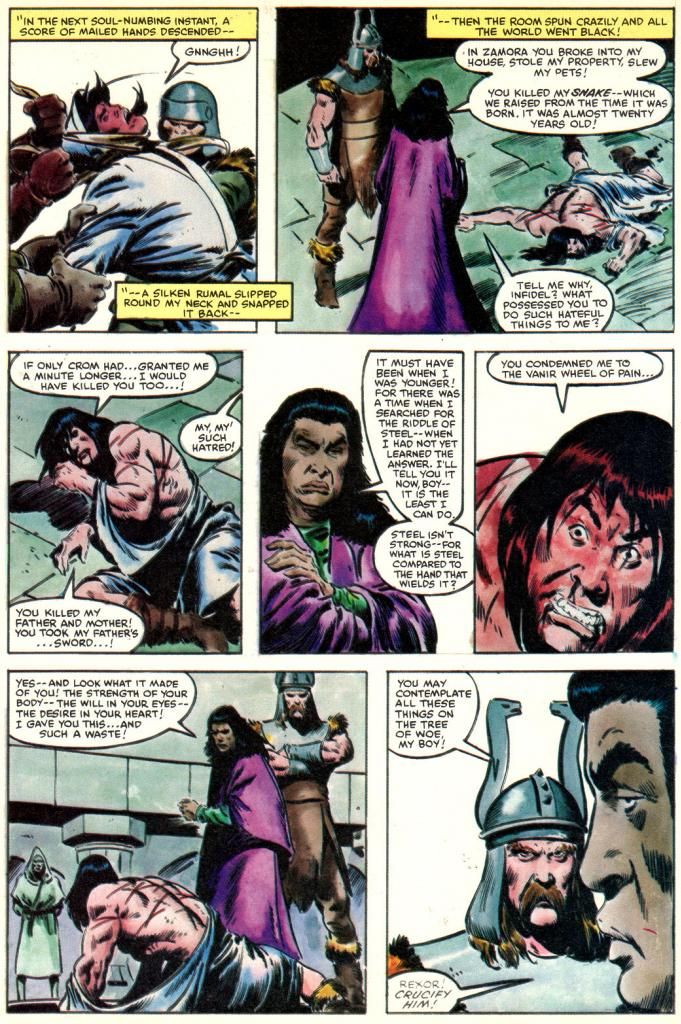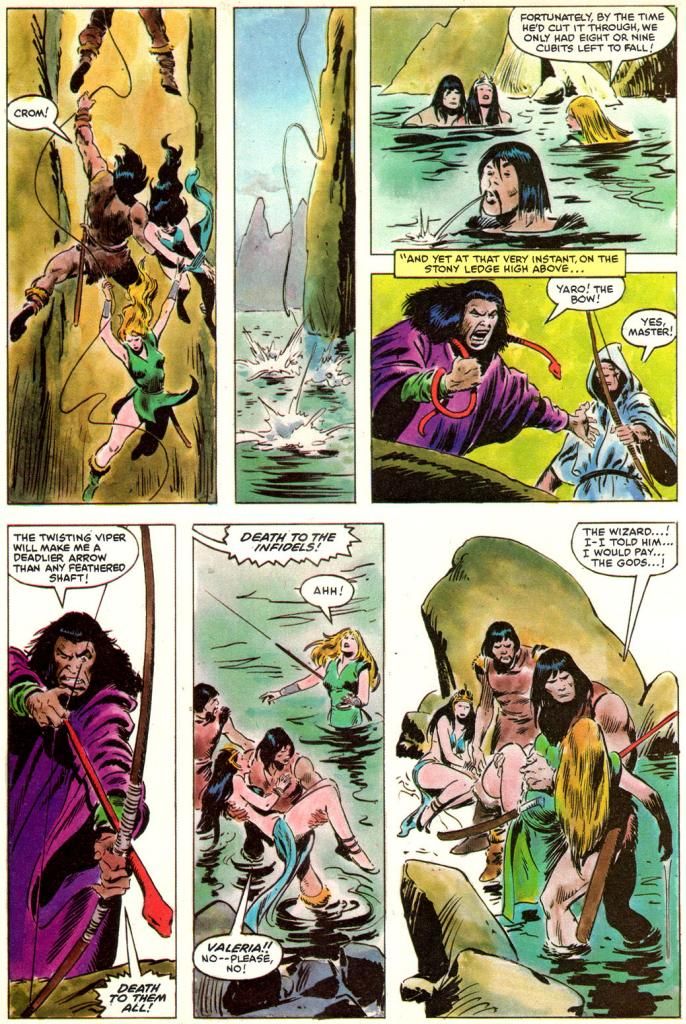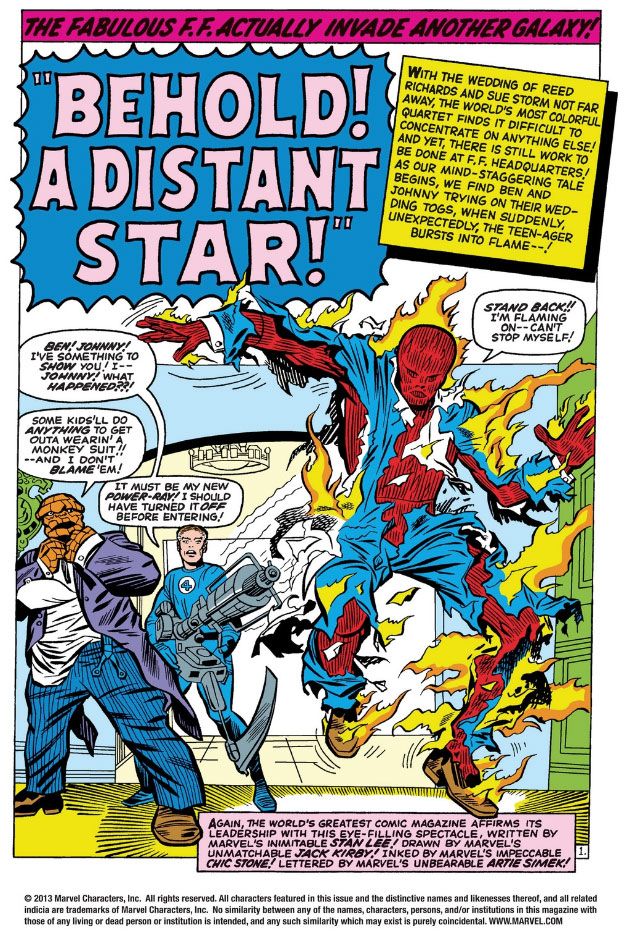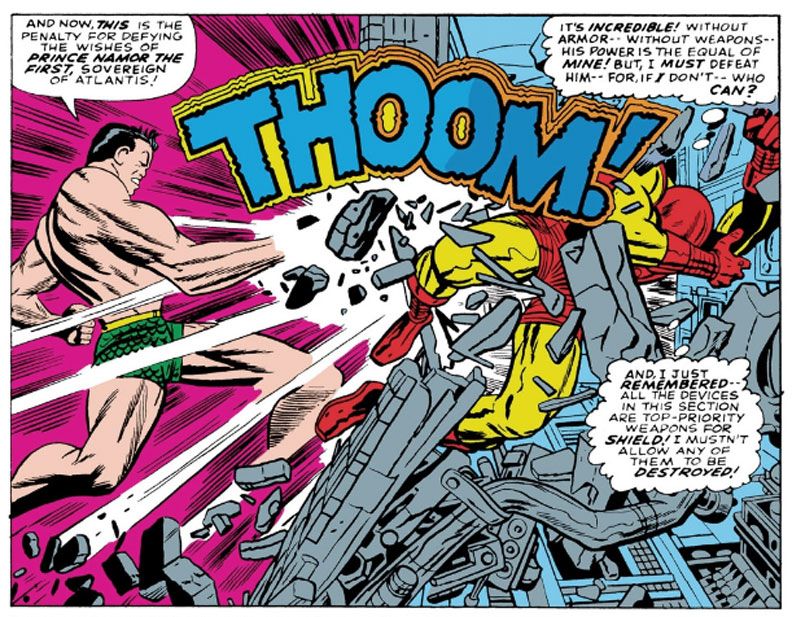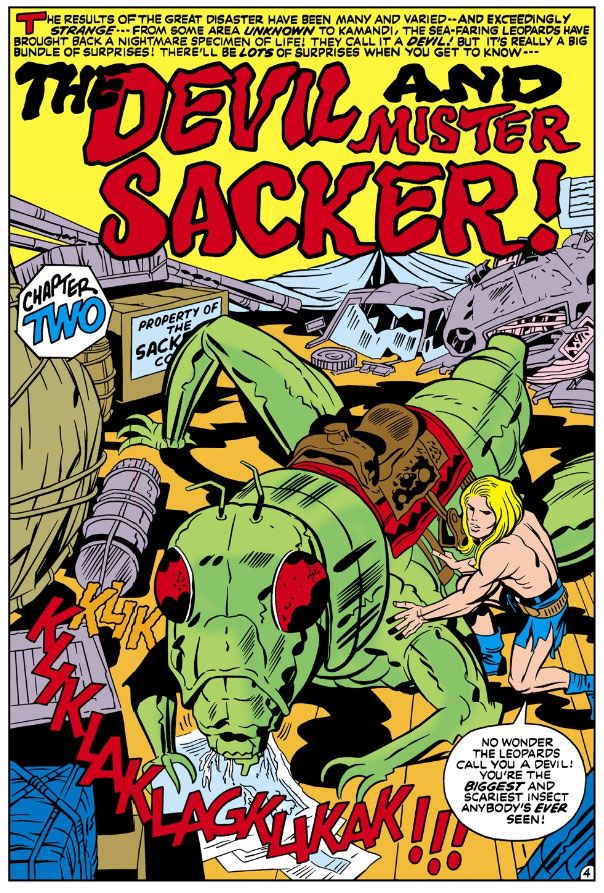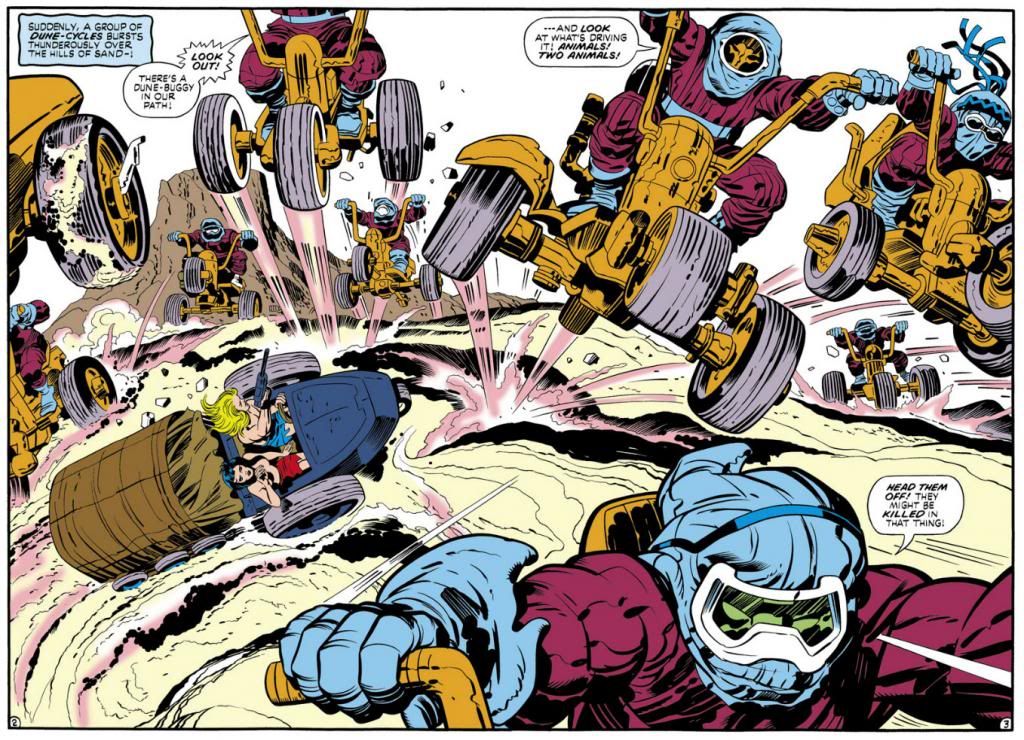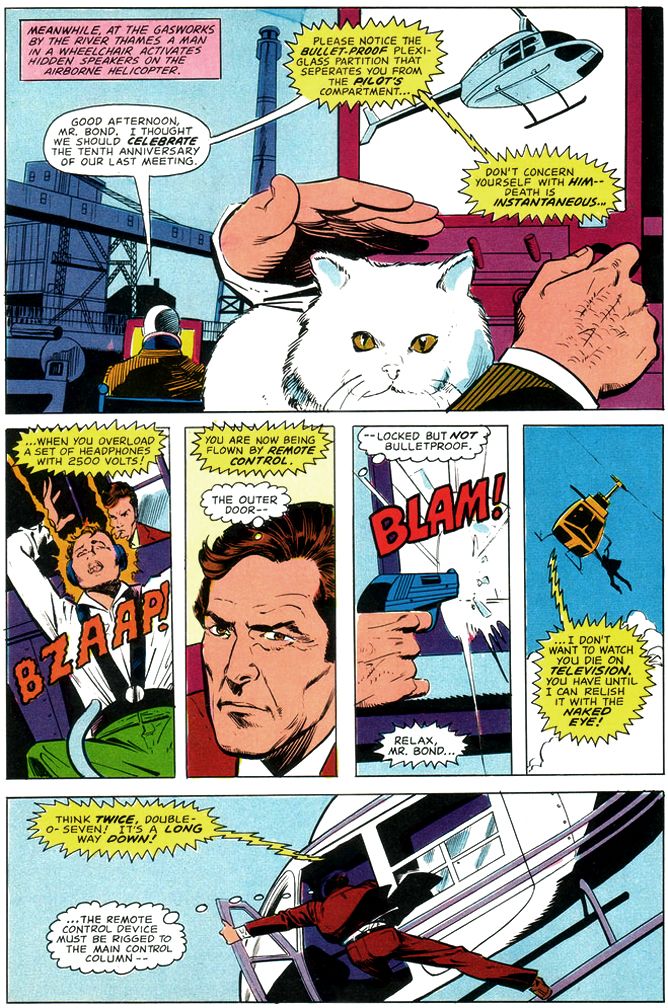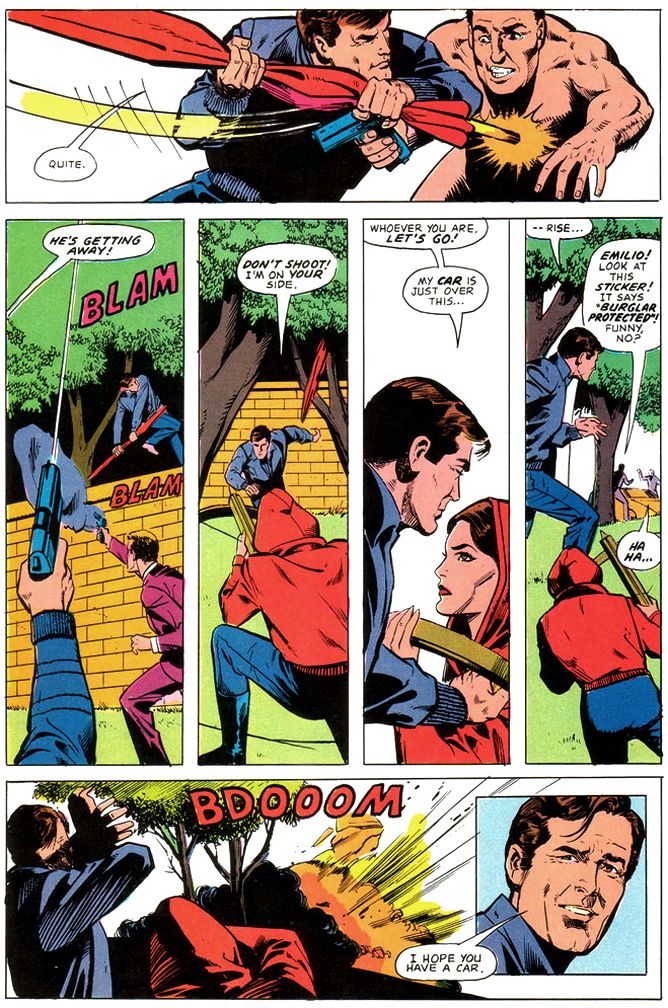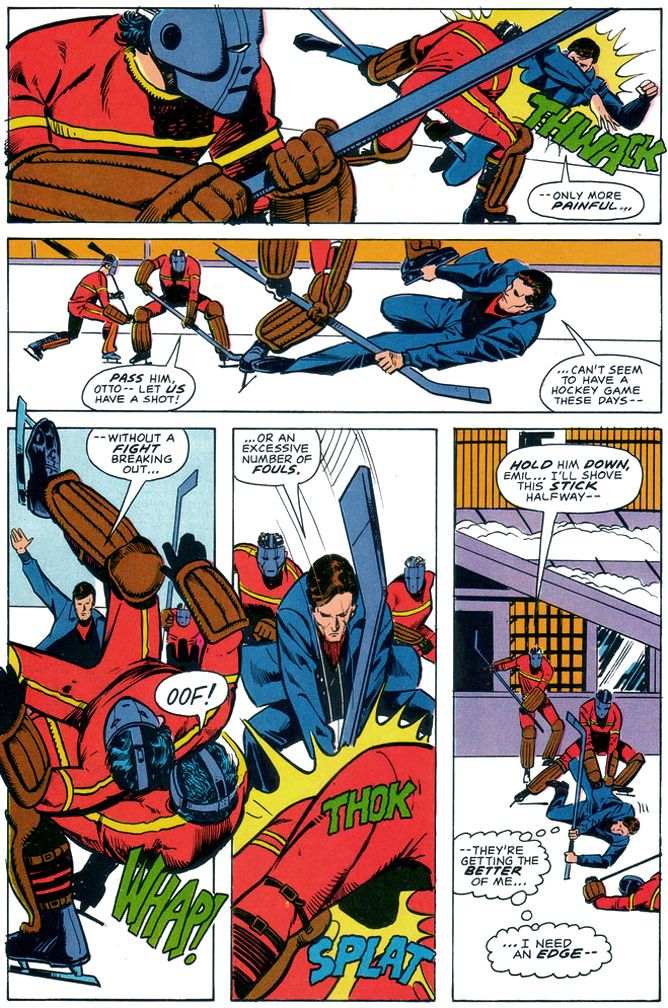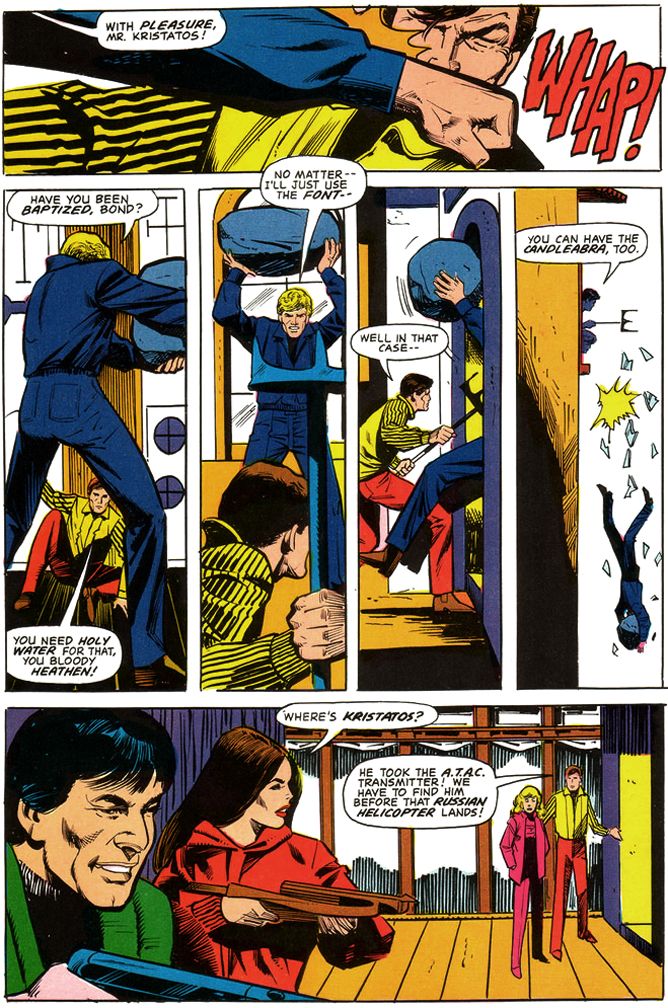The best thing about it is George Wilson's painted cover, a fairly accurate rendition of "The Joiner," which is also the book's strongest tale. And that's saying a lot when one of the stories is about a renegade Nazi who's used his shrinking gas to turn Hitler and his cronies into suspended animation figurines waiting in a glass case for their time to come around again. In "The Joiner," we meet Alvah Petty, a harassed and pathetic bookkeeper by day and all-powerful Grand Poobah of any number of men's organizations by night. The crazier the headgear and more esoteric rituals the more he likes it, all the better to keep him away from home where his wife and middle-aged beatnik son treat him like dirt. They conspire to humiliate Petty so he'll stay home nights and they can abuse him more but it backfires on them when the fake club the son comes up with-- "Knights of the Galaxy"-- improbably turns out to be the real thing and its alien members spirit a not very reluctant Petty away for a 200 year club meeting in another solar system.
The lead story is a yawner of a ghost story about a conman and his partner (who looks amazingly like great character actor Edward Andrews, who co-starred in The Twilight Zone episode "Third From the Sun") hiding out in a small town. The conman ends up engaged to a woman who may or may not be from the Other Side. You know, where the poltergeists live.
The second tale, "Secret Weapon," otherwise known as "The One with Doll Hitler," features a protagonist who might have been worthy of his own book, one Jess Mallard. Don't let his stupid, duck-like name fool you. The guy is a dogged Nazi hunter who will stop at nothing to capture his prey including offering to pay an exorbitant amount for strangely heavy carved figurines of Adolf Hitler, Martin Bormann and some joker known only as "Muller." Muller, the generic top Nazi. They should have given Mallard a better name then spun him off into his own book. Something like Duke Stone, Nazi-Hunter. It's appropriate because Serling occasionally set up Nazi characters for deserved comeuppances, as in The Twilight Zone episode "Death's-Head Revisited" and in the November 1969 Night Gallery pilot segment "Escape Route." Oh, and don't forget "He's Alive," a The Twilight Zone episode where Dennis Hopper plays a neo-Nazi would-be Hitler who runs afoul of the ghost of the real one with tragic consequences. That episode is kind of muddled and turns campy with its big reveal (don't put your pseudo-Hitler in front of a photo of the actual one, please), but it's still more gripping than the tepid "Secret Weapon," Jess Mallard aside. Mallard would have kicked Hopper's ass two minutes into his story, though, and saved everyone a lot of trouble later. Mallard may look like Leslie Howard by way of William Shatner, but he's all Robert Stack.
And then "The Joiner." The slobby beatnik who appears almost the same age as his dad, friendly green aliens and the final panel with Serling superimposed over what appears to be a highway among the stars are a few more elements that make this one a fun standout.
By now you realize none of these stories will chill you the way Serling's show did at its very best, but the art, which is apparently by EC alums Reed Crandall and/or George Evans solid enough, with caricatures of Serling that look a lot like him. Except for the one that inexplicably resembles a post-auto accident Montgomery Clift leading off "Secret Weapon." I don't know if anyone considers this book an example of either artists' A-level material, but it's easy to look at and occasionally-- especially in "The Joiner"-- has a little bit of that ol' EC magic. I would never begrudge either guy an art job in the lean days between Dr. Wertham and Warren Publications. For the history buff in me they even manage to work in a short recounting of a story I once heard about Abraham Lincoln possibly having a prescient dream about his assassination and for the skeptic who scoffs at such ridiculous notions in me, a back cover that dabbles in something that's almost science fact. All in all, Dell Four Color #1288 The Twilight Zone is a neat little package that probably has its origins more in stuff the contributors had lying around in their studios or offices than anything Serling or guys like Richard Matheson and Charles Beaumont might have come up with.
And that's it for this year's Spookey Month. I hope you enjoyed it as much as I did.



